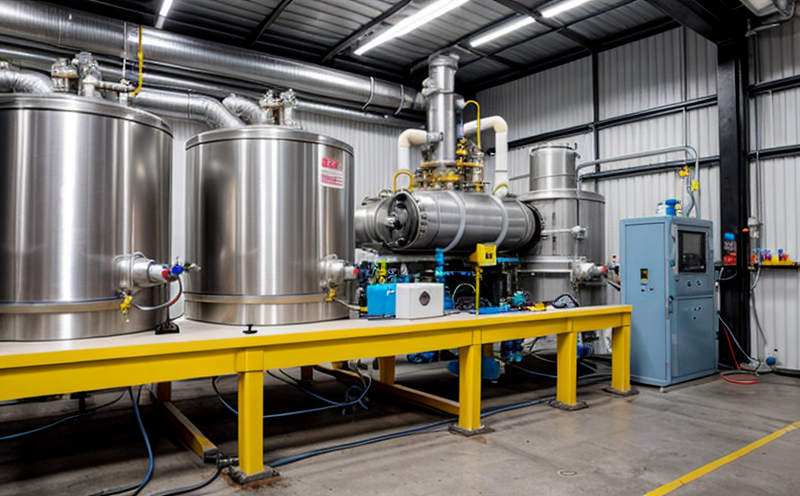ISO 12789-1 Neutron Fluence Measurement in Reactor Pressure Vessels
The ISO 12789-1 standard provides a comprehensive framework for the measurement of neutron fluence in reactor pressure vessels, which is crucial for ensuring long-term structural integrity and safety. This service addresses the specific need to quantify the cumulative exposure of neutrons within reactor materials over time, providing essential data for life extension programs and regulatory compliance.
Neutron activation analysis involves subjecting a specimen material to neutron irradiation in a nuclear reactor, followed by detailed chemical analysis to determine elemental concentrations. For reactor pressure vessels, this service is particularly important as it allows for the accurate assessment of the effects of neutron exposure on materials such as stainless steel and nickel alloys.
The process begins with rigorous sample preparation, ensuring that the material to be analyzed accurately represents the overall composition of the reactor pressure vessel. The specimen is then subjected to neutron irradiation in a controlled environment within a nuclear reactor. Post-irradiation, it undergoes detailed chemical analysis using techniques such as instrumental neutron activation analysis (INAA) and gamma spectrometry.
The resulting data provides insights into the levels of specific elements like nickel, cobalt, and iron isotopes that are formed due to neutron interactions with the material. This information is critical for understanding the aging mechanisms within reactor pressure vessels and predicting their remaining service life.
Compliance with ISO 12789-1 ensures that the testing process adheres to internationally recognized standards, providing a benchmark for reliability and accuracy. The data generated from this test can be used to inform maintenance schedules, optimize operational parameters, and support regulatory submissions required by nuclear safety bodies.
The service also includes detailed reporting tailored to meet the specific needs of our clients. This report provides comprehensive analysis of neutron fluence levels, potential material degradation factors, and recommendations for future monitoring programs. By leveraging this data, stakeholders can make informed decisions regarding the continued operation and eventual decommissioning of nuclear reactors.
The importance of accurate neutron fluence measurement cannot be overstated. It is a cornerstone in ensuring that reactor pressure vessels remain safe and reliable throughout their operational lifecycle. This service not only adheres to international standards but also supports the broader goals of sustainability by enabling more informed decisions that extend the useful life of nuclear infrastructure.
- Benefits: Accurate neutron fluence measurement ensures compliance with international standards, enhances safety, and extends the operational lifespan of reactor pressure vessels.
- Why Choose This Test: The ISO 12789-1 standard provides a robust framework for measuring neutron fluence, ensuring accurate data that is essential for maintaining nuclear safety and reliability.
The complexity of this service underscores the importance of selecting a reputable laboratory with experience in radiation testing. Our team of experts ensures that every step from sample preparation to final reporting meets the highest quality standards. By choosing our service, you can be confident in receiving accurate, reliable data that supports informed decision-making for your nuclear operations.
The ISO 12789-1 Neutron Fluence Measurement in Reactor Pressure Vessels service is not only instrumental in ensuring nuclear safety but also contributes significantly to environmental sustainability. By accurately measuring neutron fluence, this process helps in optimizing reactor operations and extending the life of existing infrastructure, thereby reducing the demand for new materials and energy resources.
The data generated from this testing can inform decisions that lead to more efficient use of nuclear fuel and reduced waste generation. Moreover, by supporting long-term operational reliability, this service helps in minimizing disruptions and associated environmental impacts. Through precise measurement and analysis, we contribute to a more sustainable approach to nuclear power management.





